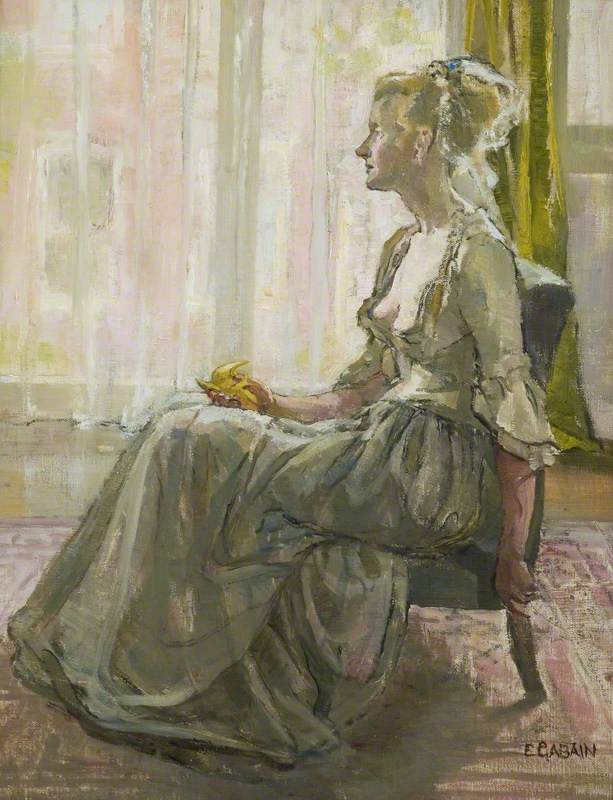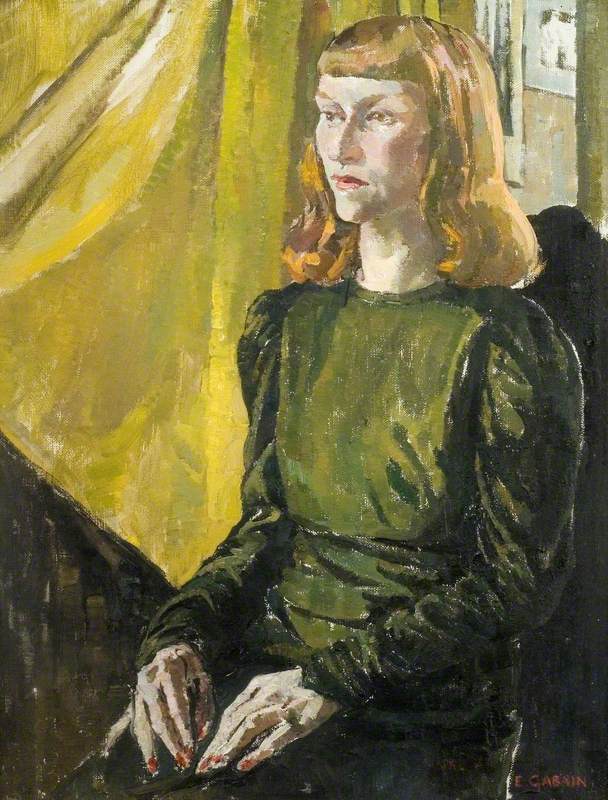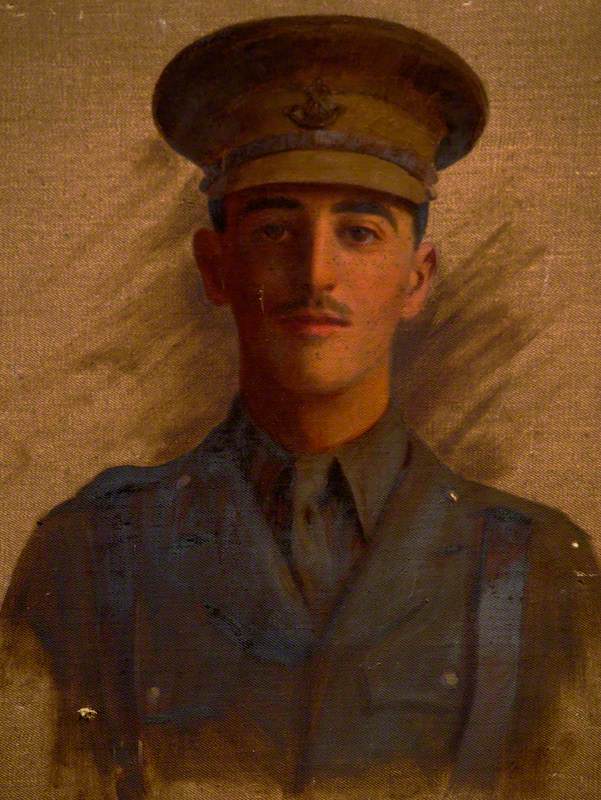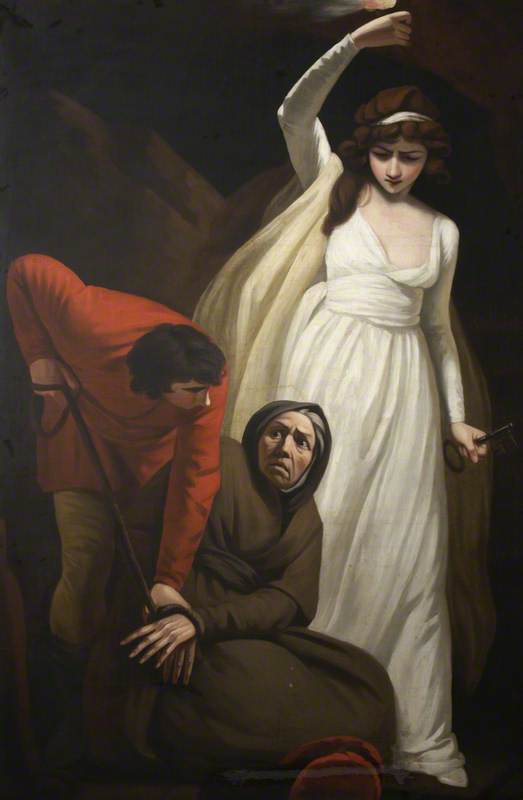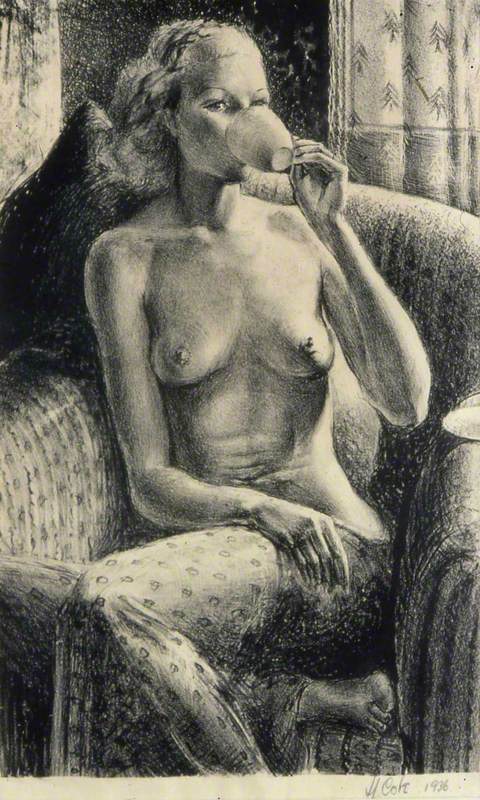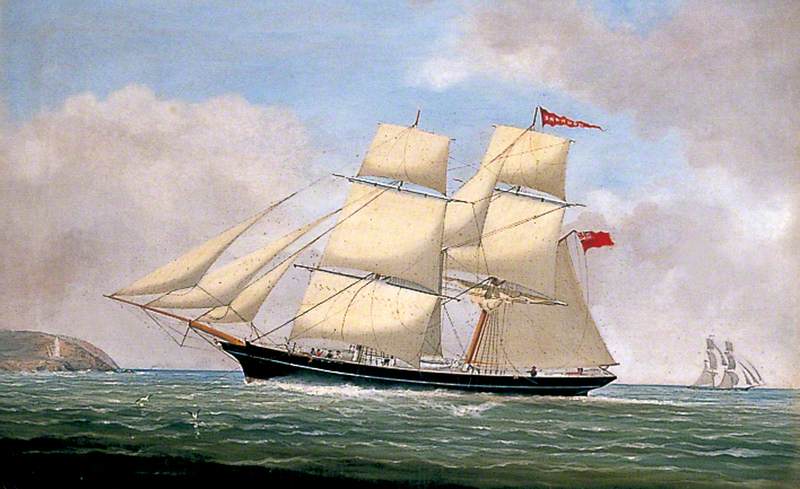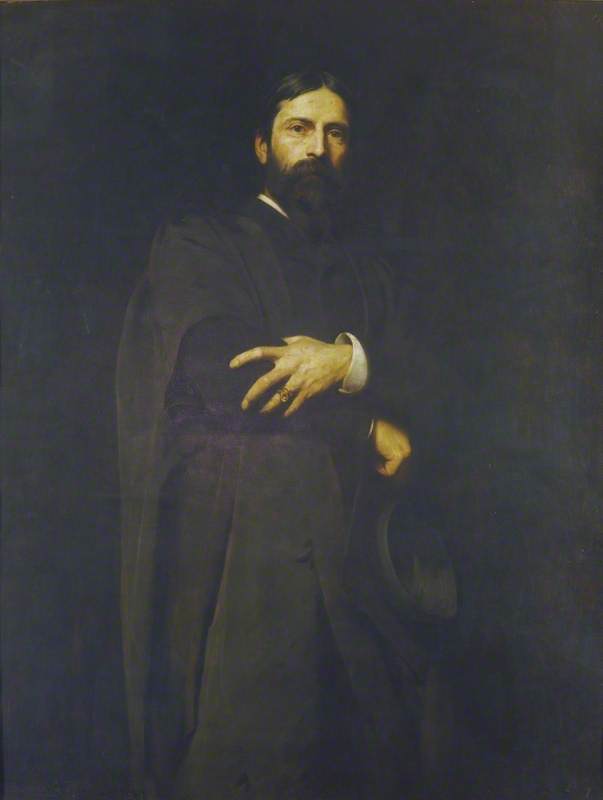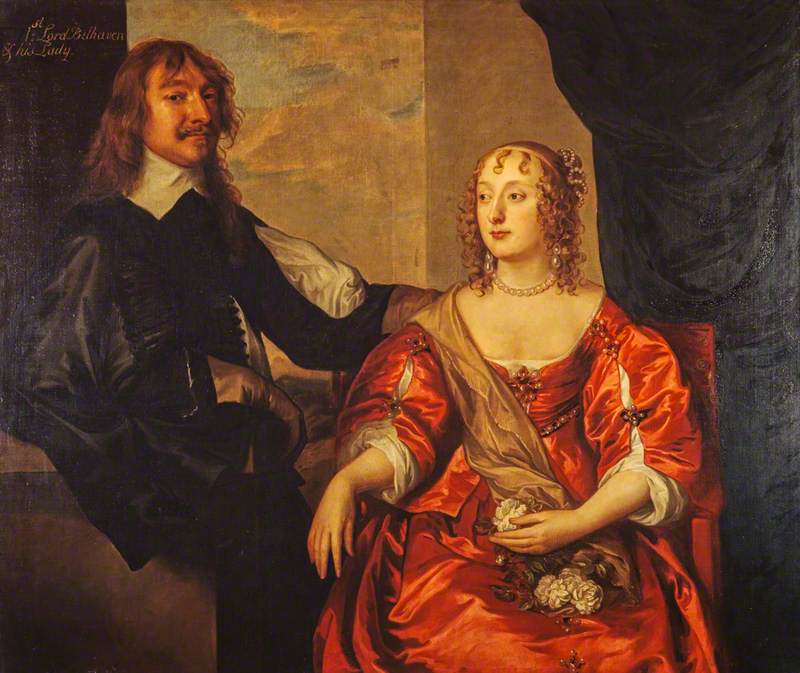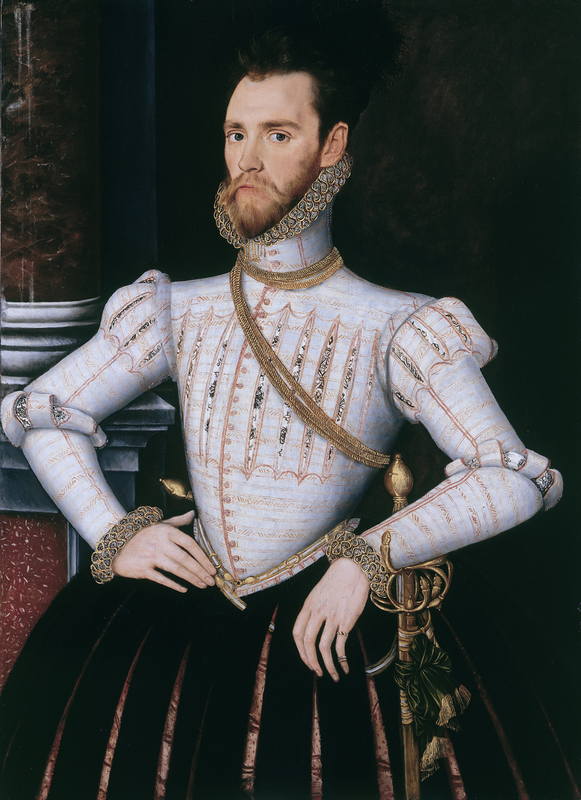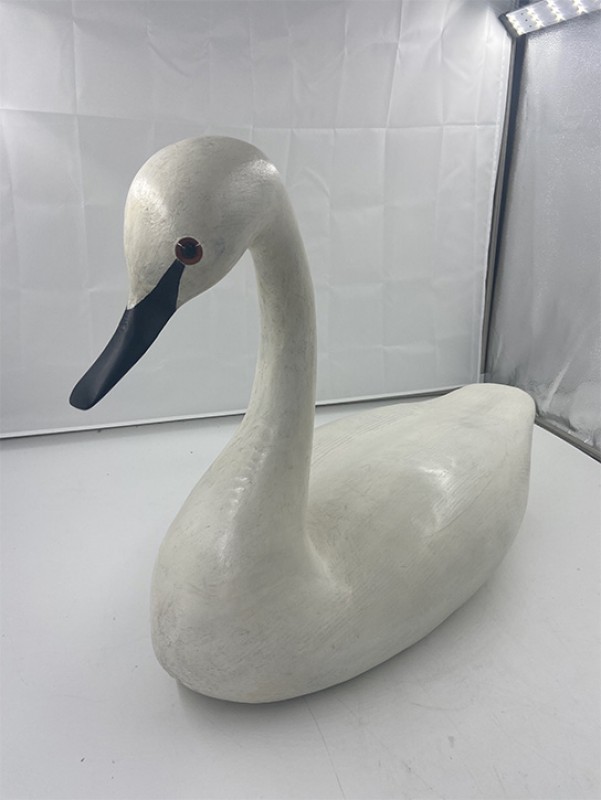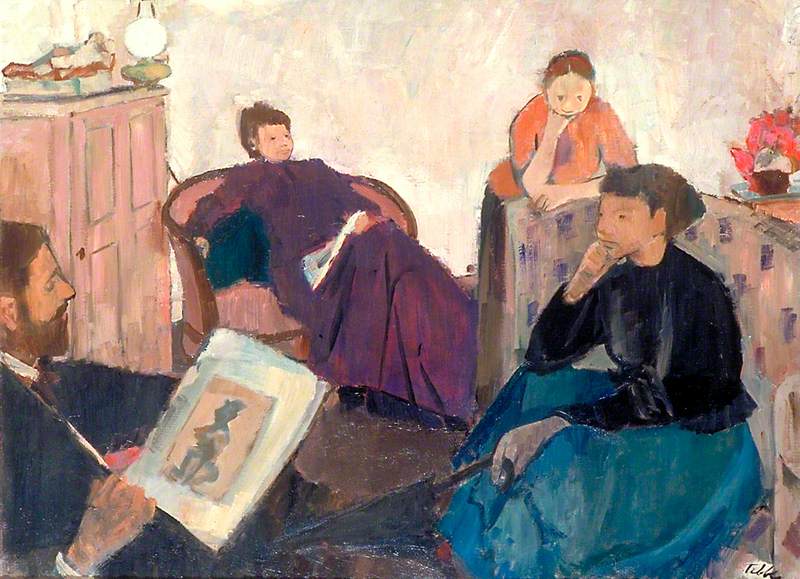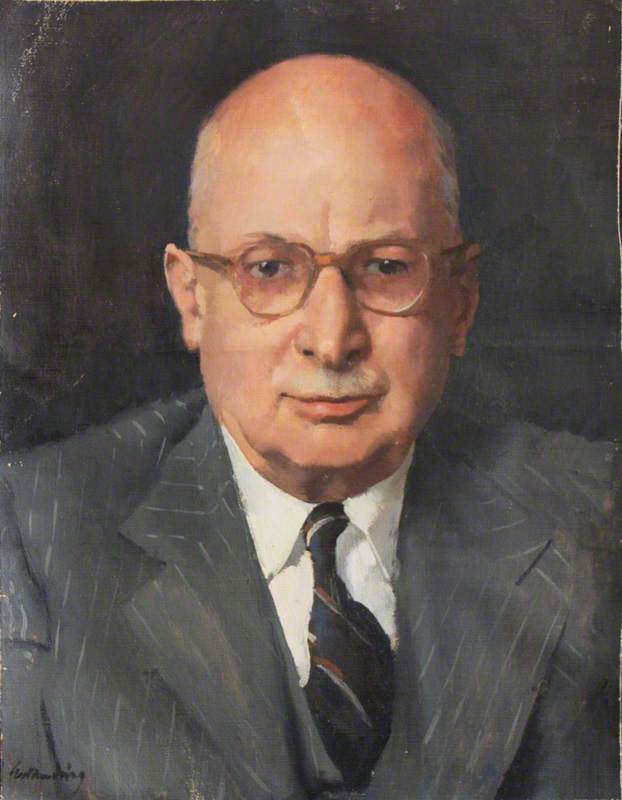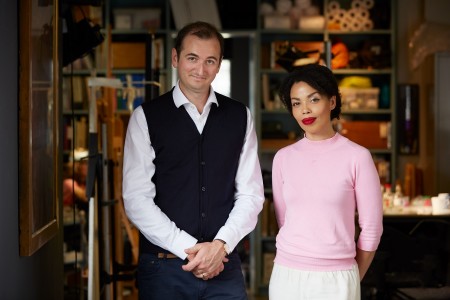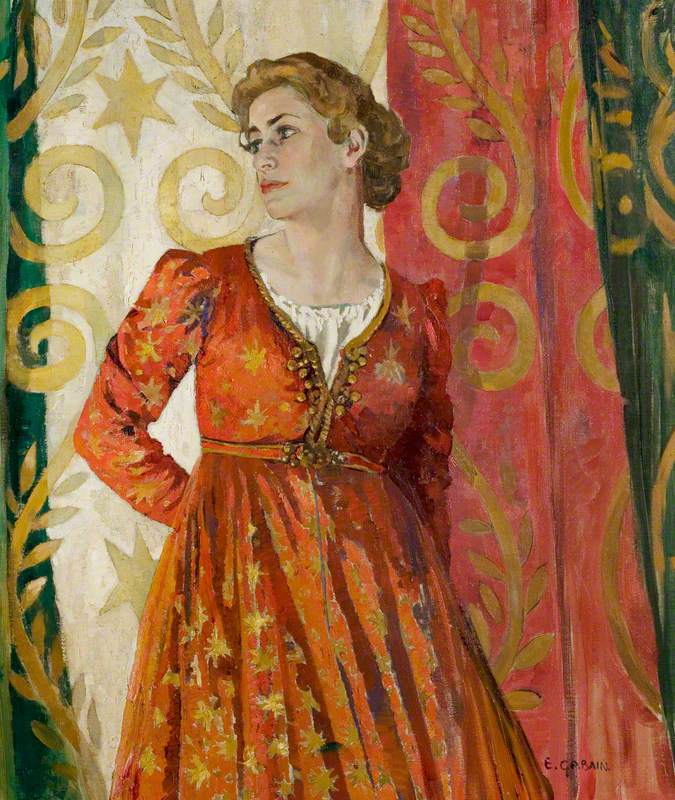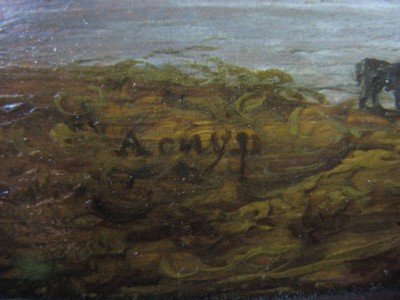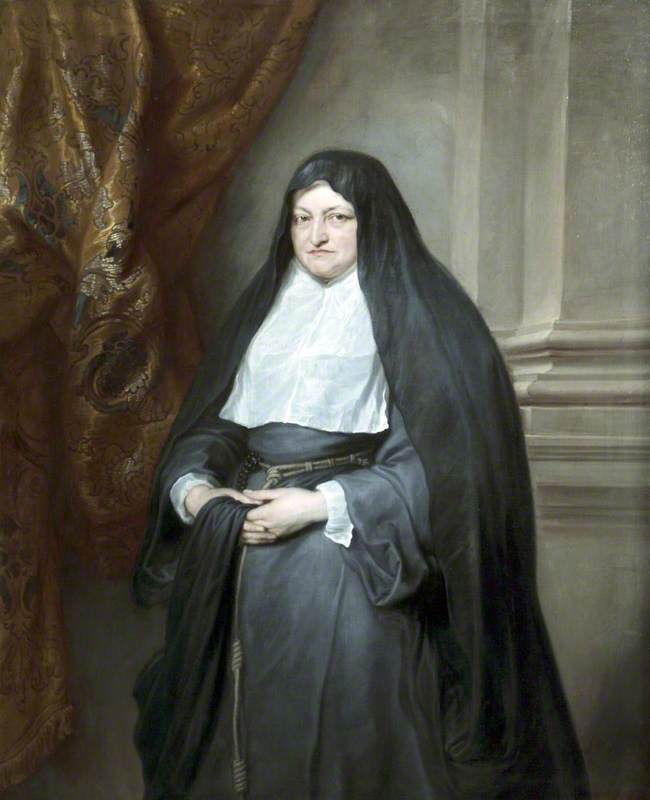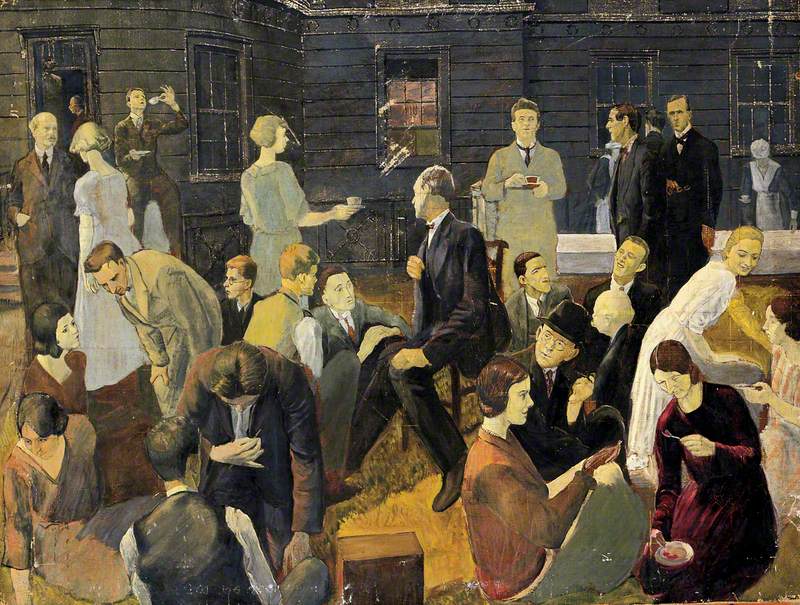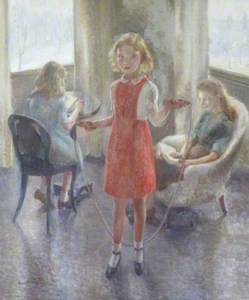Sitting at her computer, Margaret Moore was shocked and elated to find herself confronted by an image of her 16-year-old self on the screen. Made possible by Art UK, the discovery marks a triumphant end to Mrs Moore’s lengthy quest to find a painting she sat for in 1950.
Margaret Moore, then Margaret Johnson, began to model at the age of 11, after being approached by artist Anne Finlay in Kennington Park. As if by chance, Margaret had decided to ‘hop the wag’, or play truant, that day, much preferring an afternoon in the park to school. As she danced around a maypole in a bright red dress, she became aware that she was being watched by a young woman; convinced that this woman was a school officer, Margaret was initially hesitant when Anne Finlay approached her and asked to paint her portrait. However, after much persuading and a fair share of convincing Margaret’s displeased parents, Margaret sat for her first painting with Miss Finlay, entitled Girl Reading, which was exhibited at the Royal Academy in 1950 and now hangs in Mrs Moore’s house in Kent. Finlay painted several other paintings of Margaret, including one titled The Oboe Player, the whereabouts of which are unknown.
When Margaret was 16, Miss Finlay got her a job as a model at the Royal Academy, which is where she met ‘Mrs Copley’, artist Ethel Leontine Gabain. Married to artist John Copley, then president of the Royal Society of British Artists, Gabain was 'a very old woman and a marvellous painter.’ Sitting for Mrs Copley, Margaret recalls, ‘I was sitting by a French window, looking at a bird in a tree, I was wearing a big cream gown … just like the dress Princess Diana wore to her wedding.'
Sadly, Gabain died before finishing the painting, leaving Margaret with no visual record of the work; she ‘never even got a peep at the painting’, as Gabain always insisted on covering the canvas whenever Margaret took a break from sitting. With Gabain’s death, the painting disappeared without a trace. Later, while sitting for another artist, Margaret learned that Gabain’s husband or son had finished the painting and it was hanging in an exhibition; however, without a known artist or title, the painting became virtually untraceable. In a letter to her granddaughter in 2007, Margaret remarks,
'Grandad keeps saying to me that one day we will go to the Royal Academy in London and try to trace the painting by Mrs Copley. But I don’t think we shall have much luck because if her son/husband finished it off, they could have used their own name and given it a title, so without knowing what they had called it, I don’t have much chance of finding any information on it.'
Despite her scepticism, Margaret did not lose hope, expressing in the same letter her wish to track down the painting. She writes, 'I would really like to trace it, even just to have a photo of it would be nice. I think it would have been a lovely painting… It would be lovely to see it.' Thus, later that year, Margaret began her search in earnest, contacting the National Portrait Gallery with her story and asking for any leads. However, it wasn’t until a search through the Art UK database in March 2013 that Mrs Moore made any progress. She recognised both herself and the surroundings instantly and describes her reaction as pure elation.
In April of that year, Mrs Moore finally got to see the completed painting, titled The Bride and the Canary, which now hangs in the Bushey Museum and Art Gallery in Hertfordshire. In a word, Mrs Moore describes the visit as ‘rewarding’, a successful reunion to conclude a separated-at-birth art story.
Courtney Halgren, Art UK Volunteer
